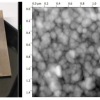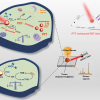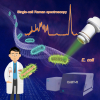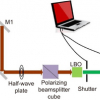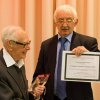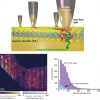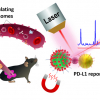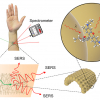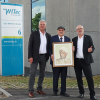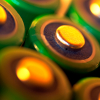Raman Spectroscopy News
HORIBA announced today that it has acquired Process Instruments, Inc. Process Instruments, a leading developer and manufacturer of Raman process spectroscopy for environmental and process markets, will become part of the HORIBA Group’s.
A new scientific study published in the prestigious international journal "Science Advances" has investigated one of the still poorly understood aspects of cancer, therapy-induced senescence in tumour cells. The study, the result of collaboration among researchers from Politecnico di Milano (Italy), Johns Hopkins University in Baltimore(USA), the National Cancer Institute in Milan (Italy), and the National Research Council (Italy), expands our understanding of cancer biology and paves the way for future therapeutic advancements.
A new paper has reviewed the combination of instrumentation and computational approaches to coherent Raman scattering.
A new sensor can identify the global content and form of arsenic-containing molecules at very low concentrations.
WITec GmbH has delivered a new instrument to the Center for Solar Energy and Hydrogen Research (ZSW) Baden-Württemberg.
The IRDG’s two student travel awards are now open for applications: the Chalmers & Dent Student Travel Award and the Francis Dunstan Travel Awards.
New method offers high-throughput chemical imaging hundreds of times faster than traditional approach.
NTU Singapore has launched the S$160 million Institute for Digital Molecular Analytics and Science, which aims to advance the science behind analysing biomolecules through the use of information technology and data science.
Research involving two-dimensional semiconductors has led to an ultra-tiny spectrometer that fits on a microchip and is operated using artificial intelligence.
The use of SERS to monitor the photodynamic therapy process of tumours enables understanding of the specific mechanism of the catalytic process of nanozymes.
Raman spectroscopy identifies E. coli persisters at single-cell level and reveals their metabolic activity.
Label-free trace detection of bio-molecules by liquid-interface assisted surface-enhanced Raman scattering has been realised using a microfluidic chip.
Two-photon-polymerisation lithography structures examined via Raman spectroscopy and nanoindentation.
Nominations for the IRDG’s 2022 Norman Sheppard Award are invited.
Researchers successfully performed prolonged TERS imaging of µm-scale tungsten disulfide samples without signal degradation
Ultrasensitive biosensors based on SERS have been developed to detect the cancer metastasis related programmed death ligand (PD-L1) biomarker.
Researchers have created an ultrathin SERS sensor, spun from gold, that can be attached directly to the skin without irritation or discomfort.
Raman spectra of battery electrolytes provide unique information on their chemical state-of-health.


